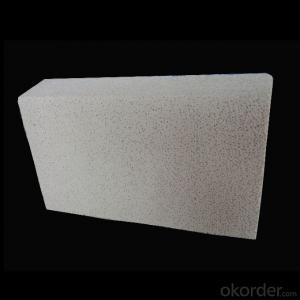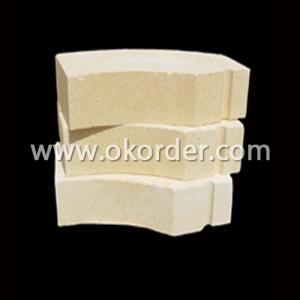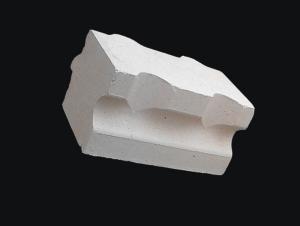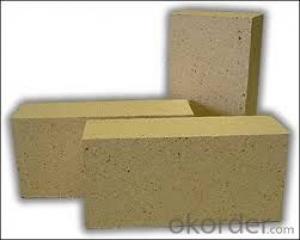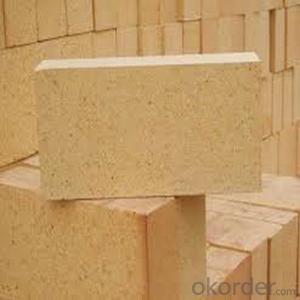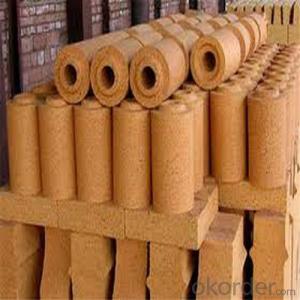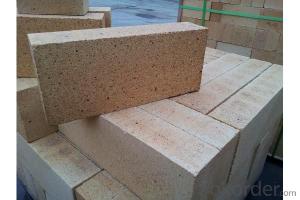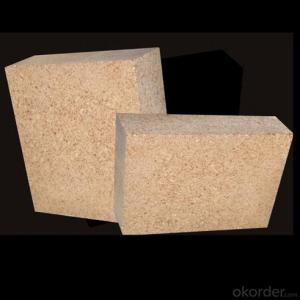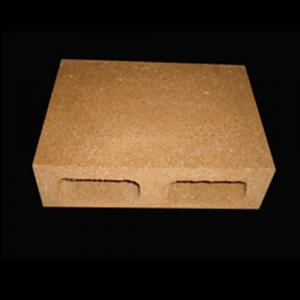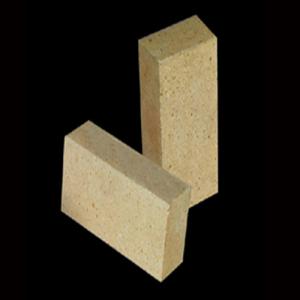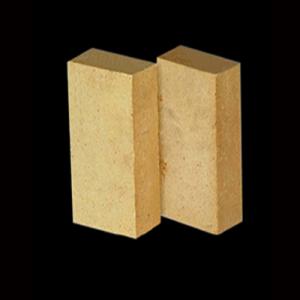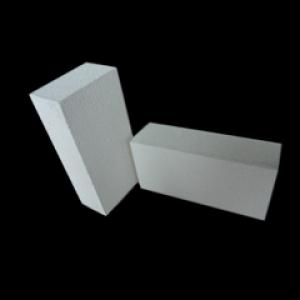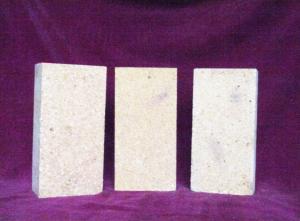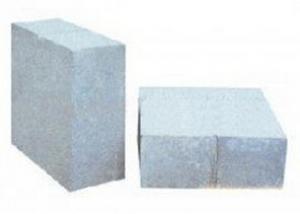Refractory Brick/Super Duty Fireclay Brick (YF/SD/42)
- Loading Port:
- China main port
- Payment Terms:
- TT OR LC
- Min Order Qty:
- 20 m.t.
- Supply Capability:
- 20000 m.t./month
OKorder Service Pledge
OKorder Financial Service
You Might Also Like
Product Description
Refractory Brick / Super Duty,Dry Press Fireclay Brick
YUFENG Refractory's Super Duty Fireclay Brick meeting ASTM regular type classifications,
Key Features:
High Strength,
Lower shrinkage,
Good Alkalis Resistant,
Good resistant to Thermal Shock
Typical Applications:
Carbon baking pit furnace fluewalls and Head Walls, Air Heaters, Combustion Chamber, Boilers, Stacks, etc
Chemical Compositions (Approximate)
Silica (SiO2) 53.10%
Alumina(Al2O3) 42%
Iron Oxide(Fe2O3) 2%
Titania (TiO2) 1.9%
Lime (CaO) 0.3%
Magnesia(MGO) 0.4%
Alkalies (Na2O+K2O) 0.6%
Physical Properties (Typical)
Pyrometric Cone Equivalent
Orton Standard Cones 34
Temperature Equivalent 3187º F(1753º C)
BulkDensity 139lb/ft3
(2.22g/cm3)
Cold Crushing Strength: 4000lb/ft2
(27.5Mpa)
Permanent Linear Change at 2910º F (1600º C) -0.3%
Apparent Porosity 22-24%
Hot load Test Deformation at 2640º F (1450º C) -0.2 to -0.7%
why us
1. We are a manufacturer, which can control the cost easilier than trade company also can give you anwer more quickly.
2. As a manufacturer, we know much in technique and can give you more support in technique problem.
3.We establish the company and began to produce refractory materials since 1988. We have longtime and mature experience for entire production.
4.Our products are complete in specifications with various of sizes.
5. We enjoy a good reputation in the customers in domestic and overseas markets.
- Q:How are the high alumina bricks fired?
- Light and high alumina bricks are usually fired in a weak oxidizing atmosphere. In light and high alumina bricks firing, they are often rich in impurities such as R2O, RO, Fe2O3 and so on. They react with Al2O3 and SiO2 at high temperature to produce liquid phase. In the Al2O3 - SiO2 - R2O system, the growth rate of liquid phase increases with the increase of temperature at high temperature. So, because the increase of sintering temperature brings a lot of liquid phase, the decrease of liquid viscosity will lead to the deformation of brick and the decline of brick high temperature function. Therefore, the lower sintering temperature and longer holding time should be adopted in the sintering process dominated by liquid phase sintering. The production practice shows that the same firing temperature can be used for the high grade aluminum bricks. When fired in an inverted flame kiln, it is usually 1430 degrees centigrade and insulated by 40H. The high alumina bricks such as Ill are 1390~1420 degrees centigrade. When the tunnel kiln is fired, they are 1550 and 1450~1500 degrees centigrade respectively. High alumina brick is usually made of weak oxidizing atmosphere.
- Q:Are there any differences between insulating bricks and refractory bricks?
- Heat preservation brick is to emphasize its heat preservation performance generally, not paying much attention to its refractoriness, but refractory brick is exactly the opposite. Different locations will use different materials, I hope we can choose carefully.
- Q:What is the high temperature limit of refractory bricks and refractory soil?
- Refractory bricks are stone powder and clay paste. They are fired in a kiln of 1300 degrees. The upper limit is 1500 degrees above normal pressureRefractory bricks - refractory materials of a specified shape and size.
- Q:In 2016, a few of the traditional refractory materials will be able to survive
- From the year 2015 to the year 16 the end of the year, refractories industry presents two kinds of situations: one is a small business, a single product variety and equipment, to meet the demands of both environmental protection and the downstream market, such enterprises are generally in the Qing state inventory;
- Q:How are the grades of high alumina bricks differentiated?
- If the content of Al2O3 is higher than 90%, it is called corundum brick. Because of the different resources, the standards of different countries are not exactly the sameFor example, European countries limit the content of Al2O3 for high alumina refractory materials at 42%.
- Q:The difference between clay bricks and clay bricks
- According to the hole rate: solid brick (no hole or hole rate less than 25% bricks), porous brick (hole rate is equal to or greater than 25%), the size of the hole is small and the number of bricks, usually used in load-bearing parts, higher strength level. Hollow brick (hole rate equal to or greater than 40%, large pore size and small amount of brick, commonly used in non load parts, low strength grade).Solid bricks and porous bricks are mostly used for load-bearing structural walls. Hollow bricks are mostly used in non load bearing structures.
- Q:Can high alumina brick resist carburizing?
- Louzhu can use heavy impervious material, it is neither high alumina brick nor mullite, this product can resist seepage and have good compressive strength
- Q:What is the heat preservation material used in a laboratory furnace?
- Thermal insulation cotton is a high-purity clay clinker, alumina powder, silica powder, chromium sand and other raw materials in the industrial furnace melting at high temperature, forming fluid. Then, compressed air is used to blow or use the wire throwing machine to turn the yarn into a fiber shape. After the cotton collector is collected, the cotton is formed into a heat preservation cotton.The high alumina brick is usually made of high alumina clinker with small amount of clay. After grinding, the high alumina brick is poured and shaped in the form of slurry by the way of gas generation or foam, and it is burnt at 1300~1500 DEG C. Sometimes industrial alumina can be used instead of some bauxite clinker. Used for lining and insulation of masonry kilns, as well as for areas where there is no strong, high temperature molten material erosion and erosion. When contacting the flame directly, the surface contact temperature shall not be higher than 1350 degrees centigrade.
- Q:How many cubic bricks does a high alumina brick have?
- It is related to the content of aluminum in high alumina bricks.
- Q:What should be used as binder for making high alumina bricks?
- In addition, high alumina micro powder can be used as binding agent, or high alumina micro powder and clay powder are prepared according to a certain proportion, and synthetic mullite is used as bonding agent. With these binders, high alumina bricks without two expansion can be prepared.
1. Manufacturer Overview |
|
|---|---|
| Location | |
| Year Established | |
| Annual Output Value | |
| Main Markets | |
| Company Certifications | |
2. Manufacturer Certificates |
|
|---|---|
| a) Certification Name | |
| Range | |
| Reference | |
| Validity Period | |
3. Manufacturer Capability |
|
|---|---|
| a)Trade Capacity | |
| Nearest Port | |
| Export Percentage | |
| No.of Employees in Trade Department | |
| Language Spoken: | |
| b)Factory Information | |
| Factory Size: | |
| No. of Production Lines | |
| Contract Manufacturing | |
| Product Price Range | |
Send your message to us
Refractory Brick/Super Duty Fireclay Brick (YF/SD/42)
- Loading Port:
- China main port
- Payment Terms:
- TT OR LC
- Min Order Qty:
- 20 m.t.
- Supply Capability:
- 20000 m.t./month
OKorder Service Pledge
OKorder Financial Service
Similar products
New products
Hot products
Related keywords

